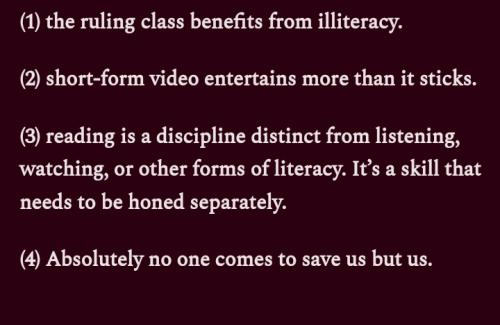Tragedyofmedusa - A.

More Posts from Tragedyofmedusa and Others

"Ya look like a freaking deer dad"
Things Real People Do in Dialogue (For Your Next Story)
Okay, let’s be real—dialogue can make or break a scene. You want your characters to sound natural, like actual humans talking, not robots reading a script. So, how do you write dialogue that feels real without it turning into a mess of awkward pauses and “ums”? Here’s a little cheat sheet of what real people actually do when they talk (and you can totally steal these for your next story):
1. People Interrupt Each Other All the Time In real conversations, nobody waits for the perfect moment to speak. We interrupt, cut each other off, and finish each other's sentences. Throw in some overlaps or interruptions in your dialogue to make it feel more dynamic and less like a rehearsed play.
2. They Don’t Always Say What They Mean Real people are masters of dodging. They’ll say one thing but mean something totally different (hello, passive-aggressive banter). Or they’ll just avoid the question entirely. Let your characters be vague, sarcastic, or just plain evasive sometimes—it makes their conversations feel more layered.
3. People Trail Off... We don’t always finish our sentences. Sometimes we just... stop talking because we assume the other person gets what we’re trying to say. Use that in your dialogue! Let a sentence trail off into nothing. It adds realism and shows the comfort (or awkwardness) between characters.
4. Repeating Words Is Normal In real life, people repeat words when they’re excited, nervous, or trying to make a point. It’s not a sign of bad writing—it’s how we talk. Let your characters get a little repetitive now and then. It adds a rhythm to their speech that feels more genuine.
5. Fillers Are Your Friends People say "um," "uh," "like," "you know," all the time. Not every character needs to sound polished or poetic. Sprinkle in some filler words where it makes sense, especially if the character is nervous or thinking on their feet.
6. Not Everyone Speaks in Complete Sentences Sometimes, people just throw out fragments instead of complete sentences, especially when emotions are high. Short, choppy dialogue can convey tension or excitement. Instead of saying “I really think we need to talk about this,” try “We need to talk. Now.”
7. Body Language Is Part of the Conversation Real people don’t just communicate with words; they use facial expressions, gestures, and body language. When your characters are talking, think about what they’re doing—are they fidgeting? Smiling? Crossing their arms? Those little actions can add a lot of subtext to the dialogue without needing extra words.
8. Awkward Silences Are Golden People don’t talk non-stop. Sometimes, they stop mid-conversation to think, or because things just got weird. Don’t be afraid to add a beat of awkward silence, a long pause, or a meaningful look between characters. It can say more than words.
9. People Talk Over Themselves When They're Nervous When we’re anxious, we tend to talk too fast, go back to rephrase what we just said, or add unnecessary details. If your character’s nervous, let them ramble a bit or correct themselves. It’s a great way to show their internal state through dialogue.
10. Inside Jokes and Shared History Real people have history. Sometimes they reference something that happened off-page, or they share an inside joke only they get. This makes your dialogue feel lived-in and shows that your characters have a life beyond the scene. Throw in a callback to something earlier, or a joke only two characters understand.
11. No One Explains Everything People leave stuff out. We assume the person we’re talking to knows what we’re talking about, so we skip over background details. Instead of having your character explain everything for the reader’s benefit, let some things go unsaid. It’ll feel more natural—and trust your reader to keep up!
12. Characters Have Different Voices Real people don’t all talk the same way. Your characters shouldn’t either! Pay attention to their unique quirks—does one character use slang? Does another speak more formally? Maybe someone’s always cutting people off while another is super polite. Give them different voices and patterns of speech so their dialogue feels authentic to them.
13. People Change the Subject In real life, conversations don’t always stay on track. People get sidetracked, jump to random topics, or avoid certain subjects altogether. If your characters are uncomfortable or trying to dodge a question, let them awkwardly change the subject or ramble to fill the space.
14. Reactions Aren’t Always Immediate People don’t always respond right away. They pause, they think, they hesitate. Sometimes they don’t know what to say, and that delay can speak volumes. Give your characters a moment to process before they respond—it’ll make the conversation feel more natural.
Important note: Please don’t use all of these tips in one dialogue at once.










percy jackson text posts 8/?


GO APOLLO GO

SIC 'EM

EVERYONE LEND HIM YOUR STRENGTH!

Okay I’m currently furious that migraines are often so blindly easy to treat and I had to find this out myself at the age of 26 when I’ve been to a neurologist since I was 11 lol so I’m about to teach you two neat and fast little tricks to deal with pain!
The first is the sternocleidomastoid muscle, or the SCM muscle.

This big red section is responsible for pain around the eye, cheekbone, and jaw, as well as some temple pain. Literally all you have to do is angle your head down a little, angle it away from the side that hurts, and then you can gently pinch and rub that muscle. I find it best to start at the bottom and travel upwards. The relief is so immediate! You can increase pressure as you feel comfortable doing so.
Here is a short and easy video showing this in action
The second is a fast and easy stretch that soothes your vagus nerve, which is the nerve responsible for calming you down. The vagus nerve, for those unfamiliar, is stimulated by deep breathing such as yawning, sighing, singing, or taking a deep breath to calm your anger in a tense situation.
You can stretch this out by sitting up as straight as possible (this does not have to be perfect to work) and interlacing your fingers. Put your hands on the back of your head with your thumbs going down the sides of your neck and, while keeping your face forward, look all the way to one side with just your eyes. Hold that until you feel the urge to breathe deeply or yawn, or until you can tell there’s a change. Then do the same thing on the other side. When you put your arms down, you should clearly be able to turn your head farther in both directions. If the first session doesn’t get rid of your migraine, rest and repeat as many times as necessary. I even get a little fancy with it and roll my eyes up and down along the outer edge sometimes to stretch as much as I can.
If you need a visual here’s a good video on it. I know some of the language they use seems questionable but this is real and simple science and should not be discarded because it’s been adopted by the trendy wellness crowd!
I seriously cannot believe I didn’t hear a word of this from any doctor in my life. Additionally, if you get frequent recurring migraines, you may want to see a dietician. Migraines can be caused by foods containing histamines, lectin, etc. and can also be caused by high blood pressure in specific situations such as exercise, stress, and even sex.
If any of this information helps you I’d love to hear it btw! It’s so so fast and easy to do. Good luck!

[pictured is a screenshot from a cartoon of two small dogs running side by side. tied to them are sticks, with a sign connecting them. the sign reads, “i hope you get good news on something you’ve been waiting on. you deserve it”]

Israel has killed more children in Gaza since October than in four years of worldwide conflict

"Absolutely no one comes to save us but us."
Ismatu Gwendolyn, "you've been traumatized into hating reading (and it makes you easier to oppress)", from Threadings, on Substack [ID'd]
-
 sossupummit reblogged this · 2 months ago
sossupummit reblogged this · 2 months ago -
 luridlurkerwithin liked this · 2 months ago
luridlurkerwithin liked this · 2 months ago -
 mimiyas-stuff liked this · 7 months ago
mimiyas-stuff liked this · 7 months ago -
 kuper5tons reblogged this · 8 months ago
kuper5tons reblogged this · 8 months ago -
 kuper5tons liked this · 8 months ago
kuper5tons liked this · 8 months ago -
 the1000thsillycreature liked this · 9 months ago
the1000thsillycreature liked this · 9 months ago -
 zabreus liked this · 10 months ago
zabreus liked this · 10 months ago -
 nobecausecheese reblogged this · 10 months ago
nobecausecheese reblogged this · 10 months ago -
 mystycor liked this · 10 months ago
mystycor liked this · 10 months ago -
 pandaninjakill liked this · 10 months ago
pandaninjakill liked this · 10 months ago -
 mantinos liked this · 10 months ago
mantinos liked this · 10 months ago -
 kheartost liked this · 10 months ago
kheartost liked this · 10 months ago -
 rottenappleinthebox reblogged this · 10 months ago
rottenappleinthebox reblogged this · 10 months ago -
 greenapplebling reblogged this · 10 months ago
greenapplebling reblogged this · 10 months ago -
 greenapplebling liked this · 10 months ago
greenapplebling liked this · 10 months ago -
 strawbellation liked this · 10 months ago
strawbellation liked this · 10 months ago -
 gatoself liked this · 10 months ago
gatoself liked this · 10 months ago -
 presumablyalive reblogged this · 10 months ago
presumablyalive reblogged this · 10 months ago -
 leviraaaaaa liked this · 10 months ago
leviraaaaaa liked this · 10 months ago -
 c-o-z-m-o reblogged this · 11 months ago
c-o-z-m-o reblogged this · 11 months ago -
 mug-wortz liked this · 11 months ago
mug-wortz liked this · 11 months ago -
 jeemar liked this · 11 months ago
jeemar liked this · 11 months ago -
 awkwardfingerguns reblogged this · 11 months ago
awkwardfingerguns reblogged this · 11 months ago -
 awkwardfingerguns liked this · 11 months ago
awkwardfingerguns liked this · 11 months ago -
 neptuneconjunctvenusprettygirl reblogged this · 11 months ago
neptuneconjunctvenusprettygirl reblogged this · 11 months ago -
 backupvenusconjunctneptunr liked this · 11 months ago
backupvenusconjunctneptunr liked this · 11 months ago -
 gihwskks liked this · 11 months ago
gihwskks liked this · 11 months ago -
 rosecolouredocean liked this · 11 months ago
rosecolouredocean liked this · 11 months ago -
 creature-in-the-cave reblogged this · 11 months ago
creature-in-the-cave reblogged this · 11 months ago -
 cheesiefoam liked this · 11 months ago
cheesiefoam liked this · 11 months ago -
 vestaignis liked this · 11 months ago
vestaignis liked this · 11 months ago -
 personalantagonist liked this · 11 months ago
personalantagonist liked this · 11 months ago -
 personalantagonist reblogged this · 11 months ago
personalantagonist reblogged this · 11 months ago -
 xxdogxx liked this · 11 months ago
xxdogxx liked this · 11 months ago -
 legendoffreakshit liked this · 11 months ago
legendoffreakshit liked this · 11 months ago -
 fiendishfifi reblogged this · 11 months ago
fiendishfifi reblogged this · 11 months ago -
 fiendishfifi liked this · 11 months ago
fiendishfifi liked this · 11 months ago -
 pastara-cell liked this · 11 months ago
pastara-cell liked this · 11 months ago -
 okaymaybeiamabitobsessed reblogged this · 11 months ago
okaymaybeiamabitobsessed reblogged this · 11 months ago -
 okaymaybeiamabitobsessed liked this · 11 months ago
okaymaybeiamabitobsessed liked this · 11 months ago -
 cyan-echo liked this · 11 months ago
cyan-echo liked this · 11 months ago

